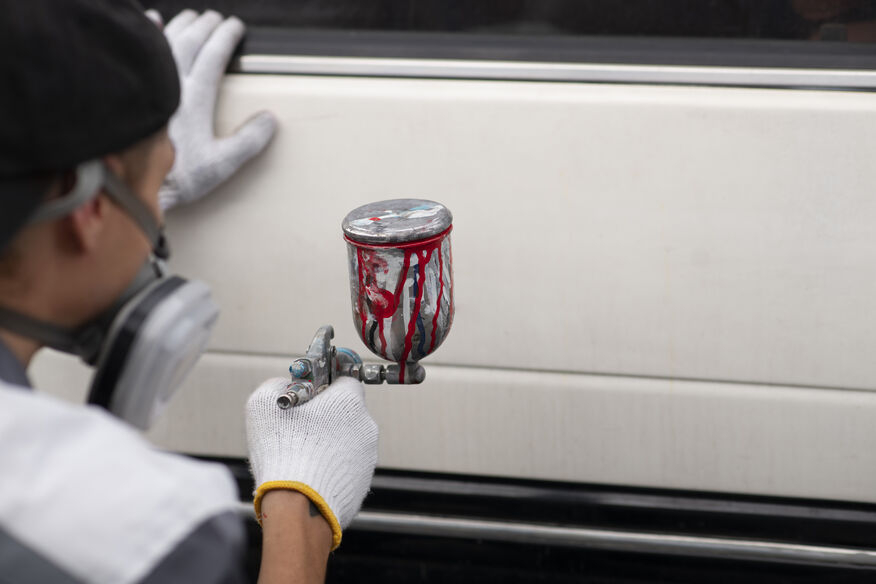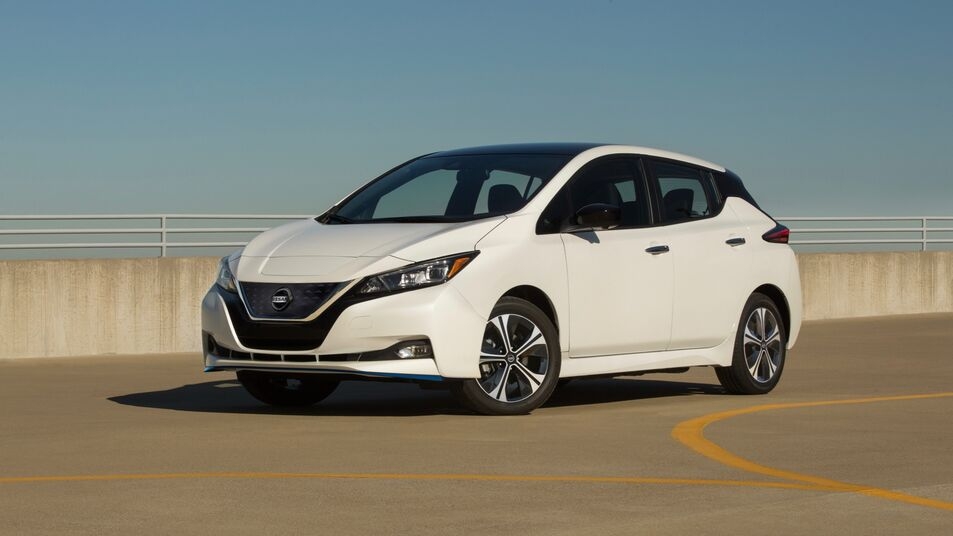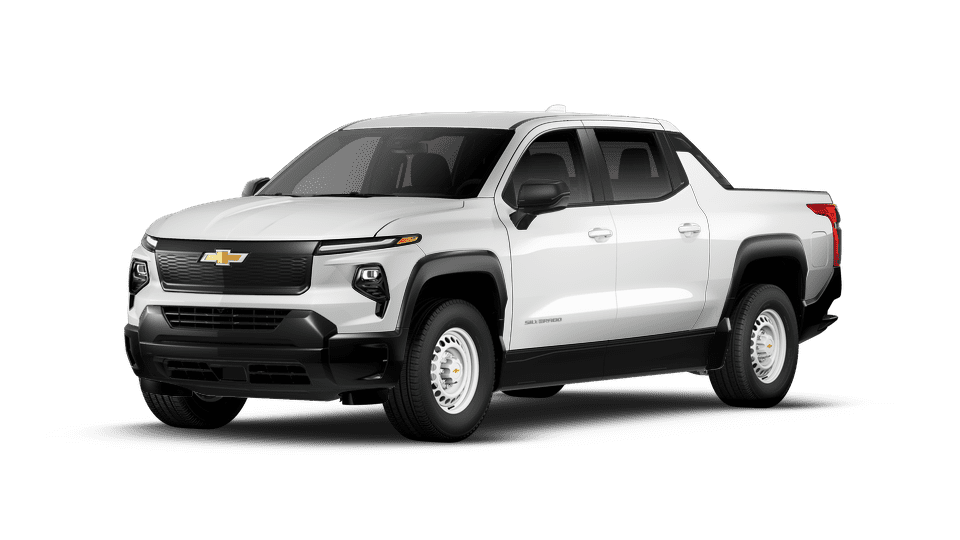Did you know a professional car paint job can range from a few hundred dollars to over $20,000 depending on your choices? Crazy, right? Whether you’re dreaming of a sleek new look or just want to keep rust away, painting your car is a big decision. It’s not just about boosting that aesthetic appeal—it can protect your ride from damage and even increase its resale value down the road. In this guide, we’re diving into everything you need to know about car painting cost. From what drives up the price to the different types of paint jobs and their auto paint job prices, we’ll cover it all. Plus, we’ll toss in some money-saving tricks. So, let’s get rolling—how much does it really cost to paint a car?
Factors That Affect the Cost of Painting a Car
You might be wondering, why does how much to paint a car vary so much? Well, it’s not just about slapping on some paint. Here’s what makes the price wiggle:
Size of the Vehicle
Bigger cars mean bigger bills—simple as that! Painting a tiny sedan is way easier than tackling larger vehicles like SUVs or pickup trucks. Think of it like this: a compact car needs less paint and time, while a giant truck is like covering a whole wall. Vehicle size really matters when it comes to labor costs and paint material.
Type of Paint
Not all paints are created equal. You’ve got options like acrylic, enamel, urethane, and water-based paints. Acrylic might be the budget-friendly option, but it’s not as tough. Urethane? It’s pricier but gives you a high-quality finish that lasts. It’s like picking between a cheap t-shirt and a durable jacket—depends on what you’re after. According to a 2023 Auto Body Association report, urethane and higher-end paints are gaining popularity for their durability.
Quality of the Paint Job
Here’s where you decide how fancy you want to get. A basic paint job is like a quick snack—cheap and gets the job done, but it’s just one coat of paint and won’t wow anyone. A standard paint job adds more paint layers for a better look and moderate protection. And a premium paint job? That’s the full VIP treatment—multiple coats, polishing, and a showroom-quality paint job that turns heads. Quality paint jobs cost more, but they can really shine.
Preparation Work
Before the fun part starts, your car needs some TLC. Sanding, rust repair, and priming are musts, especially if your ride’s in bad condition with dents or deep scratches. Cars needing extensive prep—like fixing body panel damage—rack up higher labor prices. If your car’s already in good shape, you might dodge some of those extra costs. Think of it as prepping a canvas—the messier it is, the more work it takes.
Additional Services
Want to jazz things up? A fresh coat like a glossy finish or ceramic coating adds shine and protection but bumps up the price. Custom jobs like pinstriping or a matte finish (my personal favorite—it’s so cool!) cost more too. These additional services can turn a standard paint job into something special, but your wallet will feel it.
Location and Labor Rates
Where you get the work done matters. A professional auto body shop in a big city might charge more than a small-town paint shop. Dealerships often have higher labor rates than a reputable shop down the street. Painting location can swing the cost by hundreds of dollars, so it’s worth shopping around.
Types of Car Paint Jobs and Their Costs
So, what kind of paint job fits your vibe (and budget)? Let’s break it down:
Full Paint Job
This is the whole shebang—every inch of your car’s exterior, even tricky spots like door jambs, gets a fresh paint job. Costs range from $1,000 for a basic one-coat paint job to $10,000+ for a premium paint job with a flawless finish. It’s perfect if you want a total makeover.
Partial Paint Job
Only need to fix the hood or a banged-up body panel? A partial paint job runs $500 to $3,000. It’s great for targeting specific areas, though matching the original color can be tricky if your car’s paint has faded.
Touch-Ups and Spot Repairs
For minor scratches or chips, touch-ups are your affordable alternative—$50 to $500. It’s quick and easy, like a band-aid for your car, but don’t expect it to handle bigger paint damage.
Custom Paint Jobs
Want to stand out? Custom paint jobs with metallic colors, pearlescent paint, or graphic designs can cost $5,000 to $20,000+. A recent press release from XYZ Paint Company highlighted their new eco-friendly paints, perfect for these unique looks. It’s pricey, but your car becomes a rolling masterpiece.
DIY Paint Jobs
Feeling brave, DIY enthusiasts? A DIY paint job costs $100 to $500 for paint, primer, and tools like high-quality paint sprayers. You’ll save on labor, but it’s a painting project that needs patience—mess it up, and you might get bubbly paint or uneven coats.
Average Costs of Car Painting
First things first—what’s this going to cost you? Well, it depends on the type of paint job, your vehicle size, and where you take it. I’ll break it down with some national averages, toss in a few examples, and even highlight those sneaky hidden costs that can catch you off guard.
National Averages
For a typical sedan at a mid-range body shop, here’s what you’re looking at:
- Full paint job: $2,500–$7,500. That’s a big spread, right? A basic paint job with synthetic enamel might land on the lower end, while a premium paint job with high-quality paint, multiple coats, and a glossy finish could hit the top. Larger vehicles like SUVs naturally cost more due to extra paint material and labor.
- Partial paint job: $1,000–$2,000. Perfect if you’re just sprucing up a faded hood or scratched door. It’s budget-friendly, but matching the original color can be a challenge.
- Touch-ups: $100–$300. Got minor scratches or chips? This is your quick fix—cheap and fast, though it won’t tackle deep scratches or extensive paint damage.
Cost Examples
Let’s make it real. Say you’ve got a compact car and want a standard paint job—think basic enamel, single coat, minimal prep. You’re probably looking at around $2,500. Now, if you’re cruising in an SUV and dreaming of a showroom-quality paint job—ceramic coating, pearlescent paint, the works—brace yourself for $7,000 or more. According to a 2023 report from Car and Driver, painting larger vehicles can bump costs by 20–30% due to additional labor and paint layers.
Here’s a handy comparison table to see it all at a glance:
| Vehicle Type | Paint Job Type | Estimated Cost |
| Compact car | Standard full paint | ~$2,500 |
| Sedan | Partial paint job | ~$1,500 |
| SUV | Premium full paint | ~$7,000 |
| Any vehicle | Touch-ups | $100–$300 |
Hidden Costs
Now, don’t get blindsided—there’s more to it than just the base price. Hidden costs can creep up like:
- Paint matching: Tricky with partial jobs, especially if your original paint has faded. Could add $200–$500.
- Disposal fees: Some shops tack on $50–$100 for tossing out old paint materials.
- Uncovered repairs: Rust repair or body filler for dents found during prep? That’s extra labor—sometimes $300 or more.
Here’s my two cents: always ask for a detailed quote upfront. A reputable paint shop won’t mind breaking it down. A 2023 Auto Repair Facility survey found that 30% of folks faced unexpected charges—yikes! So, get that precise estimate and save yourself the headache.
Benefits and Drawbacks of Different Paint Job Options
So, what’s the best bang for your buck? Every paint job has its ups and downs, whether you’re going all-in or just patching up. Let’s weigh the options so you can pick what fits your vibe.
Full Paint Job
- Benefits: This is the real deal—a fresh, uniform coat of paint that screams quality. It’s long-lasting (think 5–10 years with good care) and can boost resale value by up to 10%, per Kelley Blue Book (2023). No mismatched spots, just a flawless finish.
- Drawbacks: It’s pricey and slow. A quality job might take 30–35 hours—or even 70–75 hours for high-end paints with extensive prep. Not ideal if you’re short on cash or time.
Partial Paint Job
- Benefits: More affordable and quicker—usually done in a day or two. Great for targeting specific damage like a scratched body panel or faded trim pieces.
- Drawbacks: Color mismatch is the biggie. If your original condition has shifted (hello, sun fading), blending new paint can be tough. Plus, unpainted areas might still need rust treatment down the line.
Touch-Ups
- Benefits: Cheap as chips and lightning-fast. Perfect for minor scratches or keeping your vehicle for business looking sharp without breaking the bank.
- Drawbacks: It’s a band-aid, not a cure. Won’t last long-term, and it’s useless against bigger paint damage or rust. Want to know more, visit our website…
Custom Paint Jobs
- Benefits: Want your car to turn heads? Metallic colors, pearlescent paint, or graphic designs deliver standout appeal. Awesome for an attractive and well-maintained vehicle—or a branded look.
- Drawbacks: These custom jobs start at $5,000 and climb fast. Maintenance is a pain too—matte finishes or high-quality paint sprayers need special care to stay pristine.
DIY Paint Jobs
- Benefits: The cheapest paint job around—$100–$500 for paint, primer, and an air compressor if you’re fancy. DIY enthusiasts get a kick out of the painting project, and it’s all yours to brag about.
- Drawbacks: Risky business. Mess up the surface preparation or application of paint matched, and you’re left with bubbly paint or uneven coats. Fixing it could cost more than a professional auto body shop job.
How to Save Money on a Car Paint Job
Who doesn’t love a deal? You can keep your paint job costs in check without settling for the lowest quality paint. Here’s how to play it smart.
Choose a Standard Color
Fancy paint colors like metallic or premium paint are tempting, but they jack up the price. Stick to standard colors—easier to source, cheaper to apply, and a breeze for future touch-ups. Consumer Reports (2023) says this can shave 15–20% off your bill.
Opt for Partial Painting
Why paint the whole car if only one spot’s trashed? A partial paint job focuses on the damage—like a scratched door or rusted hood—and saves you thousands. Just double-check the shop’s paint quality for a seamless blend.
DIY Prep Work
Here’s a gem: do the grunt work yourself. Sanding or cleaning the surface before painting cuts labor rates—sometimes by 10–15 hours! Not rocket science, but skip this if you’re nervous about bodywork before painting.
Compare Quotes
Don’t just nod at the first number. Hit up multiple auto paint shops—prices can swing wildly. A 2023 Edmunds study showed quotes for the same job varied by up to $1,200. Some even toss in extras like collision repair discounts.
Time It Right
Ever thought about timing? Off-peak seasons—like winter—can mean lower labor prices at a professional paint shop. Ask around; you might snag a deal when they’re less slammed.
Look for Deals
Some shops bundle auto body repair with paint jobs—think minor dent repairs or panel repairs. If your car needs a little extra love, this could trim material costs and labor into one neat package.
What to Expect During the Car Painting Process
Painting a car isn’t as simple as grabbing a can of spray paint and going to town. It’s a detailed process that blends art and science, done right by a professional auto body shop. Curious about what goes into it? Here’s the full scoop, from start to finish.
Steps in the Car Painting Process
Disassembly: Taking It Apart
First things first, your car gets stripped down. Trim pieces, mirrors, door handles, and even b
umpers might come off. Why? Because no one wants paint splattered on their chrome or rubber seals. It’s like taping off the edges when you paint a room—precision matters. For larger vehicles or custom jobs, this step can take a few extra hours, especially if you’ve got fancy aluminum trim pieces.
Surface Prep: Setting the Stage
This is the make-or-break moment. The body shop sands down the surface to kiss goodbye to old paint, rust, or deep scratches. Got rust? They’ll tackle advanced rust repair with body filler or even replace a body panel if it’s too far gone. Think of it like prepping a wall before painting—skip this, and your fresh coat won’t stick or shine. For a typical sedan, this might take 5–10 hours, but extensive prep on a rusty classic could double that.
Priming, Painting, and Clear Coating: Building the Look
Now the fun begins! A base coat of primer goes on to help the paint grip the surface. Next come the color coats—usually 2–3 layers of automotive paint for that rich, even finish. Want metallic colors or pearlescent paint? This is where they shine (literally). Finally, a clear coat seals the deal, giving you that glossy finish and protection from the elements. It’s like layering a cake—each coat adds depth and durability. For high-quality paint jobs, shops might use premium paint like acrylic enamel paints for a showroom-quality finish.
Reassembly and Polishing: The Grand Finale
Once the paint dries (usually 24–48 hours), it’s time to put everything back together. The trim pieces and bumpers go back on, and then the car gets a polish to smooth out any imperfections. Ever seen a car that looks like it’s glowing? That’s the magic of a quality job here. A reputable paint shop might spend 3–5 hours polishing to ensure no drips or bubbly paint ruin the vibe.
Timeframe: How Long Are We Talking?
- Full Paint Job: Plan on 1–2 weeks without your ride. For an average-sized sedan, you’re looking at 30–35 hours of labor. Larger vehicles or premium paint jobs with ceramic coating? That could stretch to 70–75 hours, per industry estimates from Auto Body Repair News (2022).
- Partial Paint Job or Touch-Ups: These are quicker—1–3 days. Perfect for minor dent repairs or a scratched body panel. A pro tip? Ask for a precise estimate—rushing can mean cutting corners.
Quality Checks: Your Final Inspection
When you pick up your car, play detective. Run your hand over the paint finish—it should feel sleek, not rough. Check for even color (no patchy spots) and zero drips or bubbles. A 2023 survey by Automotive Paint Trends found that 85% of customers notice uneven paint first, so don’t let it slide. If something’s off, speak up—a reputable shop will fix it.
Frequently Asked Questions (FAQs)
Got burning questions about car painting? I’ve got answers that cut through the noise, served up with a side of real talk.
How Long Does a Car Paint Job Last?
With proper care, a quality paint job lasts 5–10 years. Wax it every 3–6 months and park it out of the sun to stretch that lifespan. Go cheap with a basic one-coat paint job using synthetic enamel? You might see fading in 2–3 years. It’s like sunscreen for your car—maintenance matters.
Can I Paint My Car a Different Color?
You bet! Switching from black to pearlescent white is totally doable, but it’s not cheap. Dark-to-light changes need extra coats of paint, jacking up labor costs. Plus, some states require you to update your registration—check your local DMV. Fun fact: 62% of color changes in 2022 were to non-standard colors like metallics, says Car and Driver.
Is It Worth Painting an Older Car?
Here’s where it gets personal. If your 10-year-old sedan runs great and you love it, a fresh paint job can boost its aesthetic appeal and resale value—up to 15%, per Kelley Blue Book (2023). But if rust has taken over and body panel repairs pile up, it might not pencil out. It’s like fixing up an old bike—worth it if you’ll ride it, not if it’s headed to the junkyard.
How Do I Maintain a New Paint Job?
Treat it like a VIP:
- Wax every few months for a protective shield.
- Skip parking under trees—sap and bird droppings are paint killers.
- Wash with mild soap, not harsh chemicals. A ceramic coating can add extra armor if you’re fancy. Think of it as skincare for your car.
What’s the Difference Between Cheap and Expensive Paint Jobs?
Cheap paint jobs (think $500–$1,000) use basic enamel or fewer paint layers—fine for a quick fix but prone to chipping. Expensive ones ($5,000–$20,000+) lean on high-quality paint, multiple coats, and meticulous prep for a flawless finish that lasts. It’s the difference between a fast-food burger and a gourmet meal—both fill you up, but one’s a cut above.
Conclusion
So, how much does a car painting process cost? It’s all over the map—$50 for a DIY touch-up, $500 for a budget paint shop, or $20,000+ for a custom paint job with all the trimmings (vehicle size, paint types, and labor rates play a big role). A standard paint job on a sized sedan averages $2,500–$5,000, per Consumer Reports (2023). Want a premium paint job with metallic colors or a ceramic coating? Add a few grand.
But here’s why it’s worth it: a quality paint job isn’t just a glow-up. It fights rust, ups your car’s value, and keeps it turning heads. Whether you’re reviving a daily driver or restoring a classic, it’s an investment that pays off. Ready to refresh your ride? Hit up local auto paint shops for quotes today—skip the cheapest paint job and aim for quality materials. Your car deserves it.
Final Tip: On a budget? Try a partial paint job or handle some DIY prep work (like sanding minor scratches) to save cash without skimping on the good stuff.









